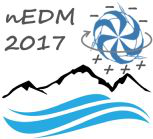Speaker
Dr
arnaud leredde
(LPSC, Université Grenoble-Alpes)
Description
In the scope of the n2EDM experiment, aiming for a sensitivity of
| leredde@lpsc.in2p3.fr |
Primary author
Dr
arnaud leredde
(LPSC, Université Grenoble-Alpes)

